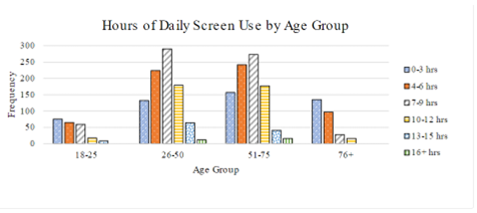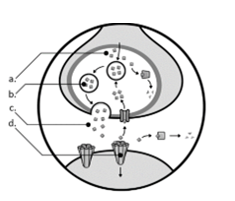What is the name for the physical presentation of an organism's genes?
A. Phenotype
B. Species
C. Phylum
D. Genotype
For those aiming to excel in their ATI TEAS test and secure admission into their desired nursing program, ExamGates offers an invaluable resource. Our platform features practice questions meticulously crafted by tutors who have previously aced the exam themselves. With ExamGates, you can access content that is 100% relevant to the test, accompanied by vivid images and illustrations. Additionally, our platform provides comprehensive explanations for both correct and incorrect answers, empowering you to fully grasp the material and optimize your study efforts. Take the first step towards your nursing aspirations with ExamGates today.
Phenotype is the physical presentation of an organism's genes. In other words, the phenotype is the physical characteristics of the organism. Phenotype is often contrasted with genotype, the genetic makeup of an organism. The genotype of the organism is not visible in its presentation, although some of the characteristics encoded in the genes have to do with physical presentation. A phylum is a group of classes that are closely related. A species is a group of like organisms that are capable of breeding together and producing similar offspring.
Therefore, the Correct Answer is A.
More Questions on TEAS 7 Science Practice Test 1
Question 1:
Where is the gastrocnemius vein in relation to the femoral vein?
A. Lateral
B. Distal
C. Superior
D. Ventral
The Correct Answer is B.The gastrocnemius vein is found in the calf. The femoral vein is found in the proximal anterior thighs/pelvis.
Since the gastrocnemius vein is found below the femoral vein it is distal or inferior to the femoral vessel.
Question 2:
What is most likely the pH of a solution containing many hydroxide ions (OH-) and few hydrogen ions(H+)
A. 2
B. 6
C. 7
D. 9
The Correct Answer is D.A solution that contains more hydroxide ions than hydrogen ions is a base, and bases have a pH greater than 7, so the only possible answer is choice D. 9.
Question 3:
Which of these does NOT match the nitrogenous base to the nucleobase?
A. Purine: Adenine
B. Purine: Thymine
C. Pyrimidine: Uracil
D. Pyrimidine: Cytosine
The Correct Answer is B.There are two types of nitrogenous bases: purine and pyrimidine bases. Purine bases have two rings in their structure and consist of adenine and guanine. Pyrimidine bases only have one ring in their structure and consist of thymine and cytosine (DNA) and uracil and cytosine (RNA). Therefore, the correct answer is B since thymine is a pyrimidine.
Question 4:
Which of the following is a carbohydrate?
A. Cellulose
B. Hemoglobin
C. Estrogen
D. ATP
The Correct Answer is A.Cellulose is a complex carbohydrate that composes the better part of the cell wall.
Hemoglobin is a protein and is found in red blood cells. Adenosine triphosphate (ATP) is a compound used by living organisms to store and use energy. Estrogen is a steroid hormone that stimulates the development of female sex characteristics.
Question 5:
Which of the following is NOT true concerning correlation?
A. Correlation can show the relationship between variables.
B. Correlation can show cause and effect.
C. Correlation can show linear relationships.
D. Correlation can show nonlinear relationships.
The Correct Answer is B.Correlations may be positive or negative and linear or nonlinear. However, correlation does not determine cause and effect. Correlation does not necessarily mean causation.
Question 6:
What is the name for the physical presentation of an organism's genes?
A. Phenotype
B. Species
C. Phylum
D. Genotype
The Correct Answer is A.Phenotype is the physical presentation of an organism's genes. In other words, the phenotype is the physical characteristics of the organism. Phenotype is often contrasted with genotype, the genetic makeup of an organism. The genotype of the organism is not visible in its presentation, although some of the characteristics encoded in the genes have to do with physical presentation. A phylum is a group of classes that are closely related. A species is a group of like organisms that are capable of breeding together and producing similar offspring.
Question 7:

Which of the following conclusions is supported by the data from this survey?
A. Dally screen usage in the United States decreases with age
B. Daily screen usage in the United States, increases with age.
C. In the United States, most people use screens more than 3 but less than13 hours a day
D. In the United States, people over 75 generally don't use screens.
The Correct Answer is C.The percentage of respondents that indicated average screen usage between 4-12 hours per day is (628 +650+389) ÷ 2, 307 ≈ 0.723 or 72.3% This is indeed a significant majority of the responses and would be a reasonable conclusion. The highest screen usage is in the middle two groups with both the younger and older groups indicating less screen usage, so the daily usage neither increases nor decreases with age. While the oldest group shows the least usage per day, the survey data indicates that some of the Individuals over 75 do indeed use screens.

Question 8:
Which of the following answers shows CH4 +2O2=CO2 +H2O as balanced?
A. CH4 + 2O2 = 2CO2 + 2H2O
B. 2CH4 + 4O2 = 2CO2 + H2O
C. 2CH4 + O2 = 2CO2 + H2O
D. CH4 + 2O2 = CO2 + 2H2O
The Correct Answer is D.For the formula CH4 + 2O2 = CO2 + H2O to be balanced there must be an equal number of molecules on both the reactant and product sides. In this case, for the formula to be balanced, a coefficient of a 2 needs to be placed in front of the O2 and the H2O molecules. This would make both the reactant and product sides have one carbon, four hydrogens, and four oxygens
Question 9:
Identify the location where neurotransmitters are stored immediately prior to use.

A. Area A
B. Area B
C. Area C
D. Area D
The Correct Answer is B.Area B is a synaptic vesicle where the neurotransmitters are stored just before use.

Question 10:
Which is NOT a major type of carbohydrate?
A. Monosaccharides
B. Disaccharides
C. Pentasaccharides
D. Polysaccharides
The Correct Answer is C.There are four major types of carbohydrates: monosaccharides, disaccharides, oligosaccharides, and polysaccharides. Monosaccharides (mono- means one) are made up of one sugar molecule, while disaccharides (di- means two) are made up of two sugar molecules. Oligosaccharides (oligo- means few) are usually less than a dozen sugar molecules, while polysaccharides (poly-means many) are usually more than a dozen sugar molecules.
Pentasaccharides are not a type of carbohydrate.